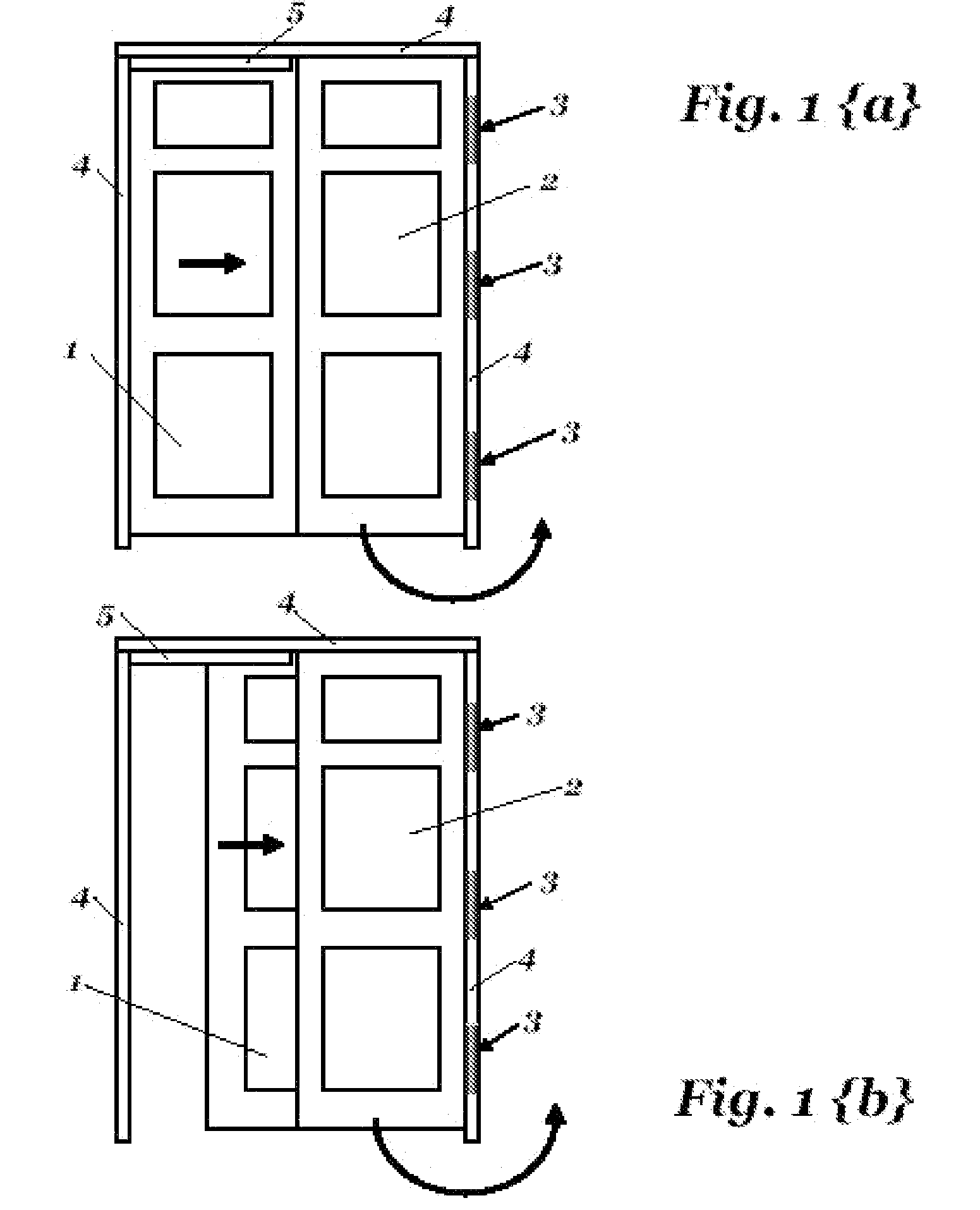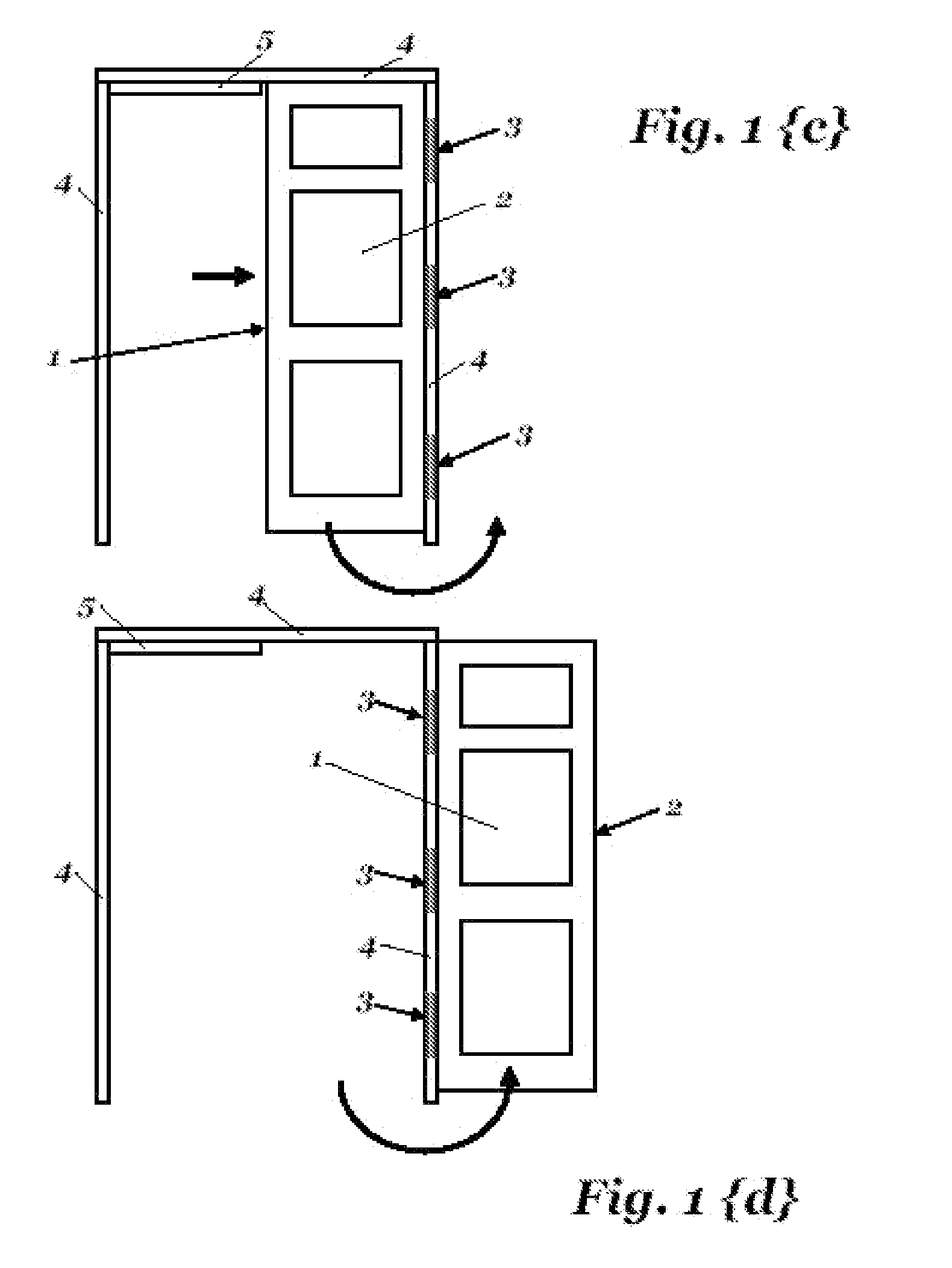Combination-action slide and hinge swinging door
a technology of sliding door and hinge, which is applied in the direction of door/window fitting, construction, fastening means, etc., can solve the problems of limiting the wall area for furniture use, difficult opening and closing the door, and often the ideal door available for a specific application
- Summary
- Abstract
- Description
- Claims
- Application Information
AI Technical Summary
Benefits of technology
Problems solved by technology
Method used
Image
Examples
Embodiment Construction
[0033] By referring to FIGS. 1-7, along with the following detailed discussion, the construction and operation of several alternate embodiments for combination sliding and swinging door assemblies of the present invention can best be understood. Although this detailed disclosure provides a thorough discussion of the preferred embodiments of the present invention, further alternate constructions for implementing the present invention can be made without deviating from the scope of this invention. Consequently, it is to be understood that the following disclosure is provided for exemplary purposes only, and is not intended as a limitation of the present invention.
[0034] In FIGS. 1-{a} through {d}, a dual action two panel unit door assembly is depicted in the fully closed position {a} though the sliding action of the sliding panel unit 1 to behind the hinged panel unit 2 {b} {c} and then with the sliding panel unit1 and the hinged panel unit 2 locked together through the hinged swingi...
PUM
 Login to View More
Login to View More Abstract
Description
Claims
Application Information
 Login to View More
Login to View More - R&D
- Intellectual Property
- Life Sciences
- Materials
- Tech Scout
- Unparalleled Data Quality
- Higher Quality Content
- 60% Fewer Hallucinations
Browse by: Latest US Patents, China's latest patents, Technical Efficacy Thesaurus, Application Domain, Technology Topic, Popular Technical Reports.
© 2025 PatSnap. All rights reserved.Legal|Privacy policy|Modern Slavery Act Transparency Statement|Sitemap|About US| Contact US: help@patsnap.com



